This Is What A Planet With Three Suns Actually Looks Like
Three hundred and twenty light years away, there is a giant planet with three suns.
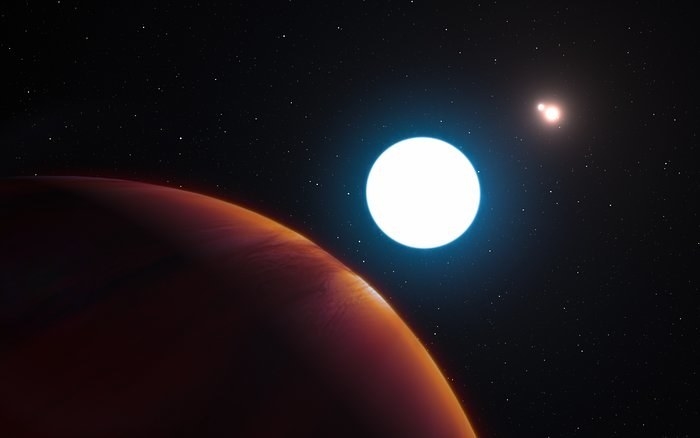
Artist’s impression of the triple-star system. ESO/ L. Calçada
It’s the first time an exoplanet – a planet outside our solar system – has been seen in a three-star system.
It’s a massive world, about four times the size of Jupiter, the biggest planet in our system. It’s also very young, by planets’ standards – about 16 million years – and relatively cool, about 500°C on its surface.It’s also unusual because there’s an actual photo. We know about the existence of about 3,400 exoplanets, but almost all of them have been detected by indirect means.
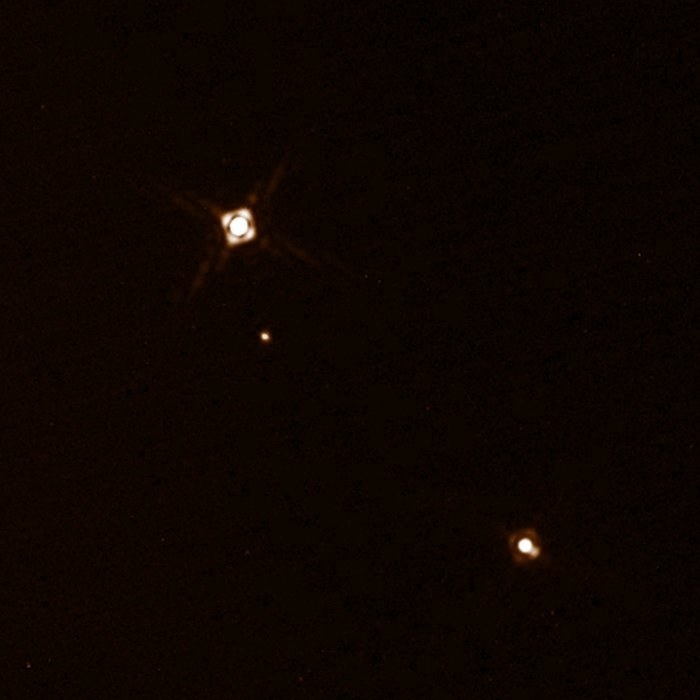
The
newly discovered exoplanet in the triple-star system HD 131399. The
small blob in the middle is the planet, much brighter than it would
appear in reality. ESO / K. Wagner et al
There have only been a handful of exoplanets actually seen with a telescope. They’re small and dim, so it’s much harder to see them than it is to see stars.
“There are not very many directly imaged planets at all,” says Dr Markus Kasper, an ESO engineer who worked on the study, “and all the rest of them are orbiting single stars.”
Being able to see it means that researchers can tell more about the planet. They can see light coming through its atmosphere and use the information there to tell what gases are in it. “We’ve analysed the photos, and confirmed that there is methane in its atmosphere,” says Kasper. Further observations will hopefully reveal even more.
When people think of planets with more than one sun, the usual comparison is Tatooine, Luke Skywalker’s home world in Star Wars.

Tatooine. 20th Century Fox / YouTube / Via youtube.com
But this isn’t like that at all.
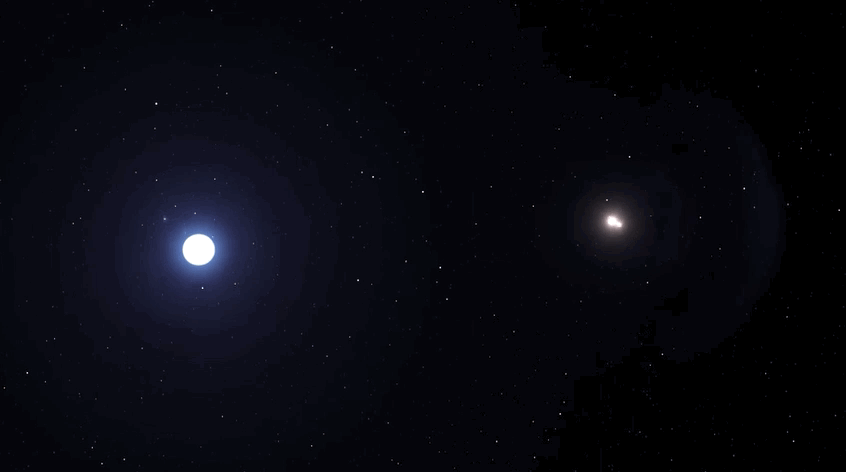
Artist’s impression of how the planet orbits the main star, with the other two stars in a binary system further out. ESO / YouTube / BuzzFeed / Via youtube.com
Tatooine would be what is called a “circumbinary” system, while this is an S-type, or satellite-type, system.
That means that someone on the planet would see one bright sun and two dimmer ones.
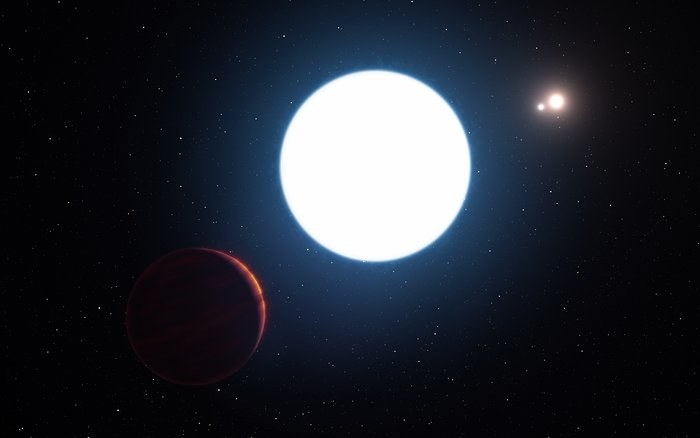
ESO / L Calçada
“But if you’re on the far side of the system, you’d have three suns the sky at once.” The binary stars would be a lot dimmer, but still bright enough to cast shadows, he says.
It’s also a really enormous system. The planet is about 80 times as far away from its sun as we are from ours, and its year is 500 Earth-years long.
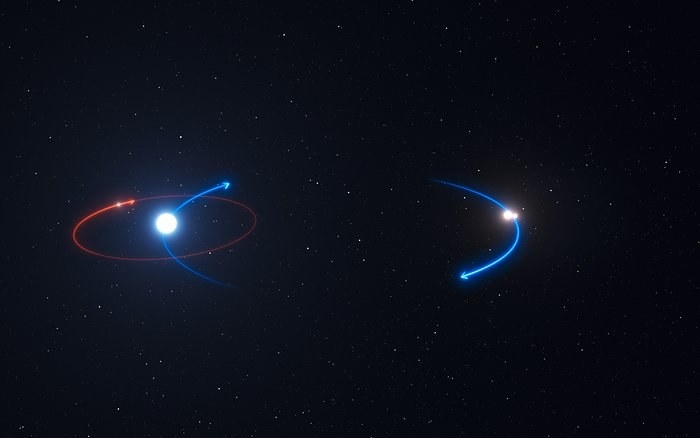
A graphic showing the orbit of the planet in the HD 131399 system (red line) and the orbits of the stars (blue lines). ESO
The orbit appears to be stable, as well. In multi-star systems, that’s fairly unusual, because the other stars pull the planet’s orbit around, and either throw it out into interstellar space or make it crash into the sun.
A planet that massive couldn’t have formed that far from its star, so it must have come from somewhere else.

A protoplanetary disc surrounding the young star HL Tauri. ESO / Via eso.org
“It can’t have formed out there,” says Kasper. “It’s a clear indication that it must have either been injected into the system from elsewhere, or moved outwards from a closer orbit, or possibly formed around the other two stars and moved across.”
It’s not possible to tell which it is yet, because the 500-year orbit means it takes a long time to see how it moves. “With more observations, we could tell, but it’ll take several years,” says Kasper.
Comments
Post a Comment